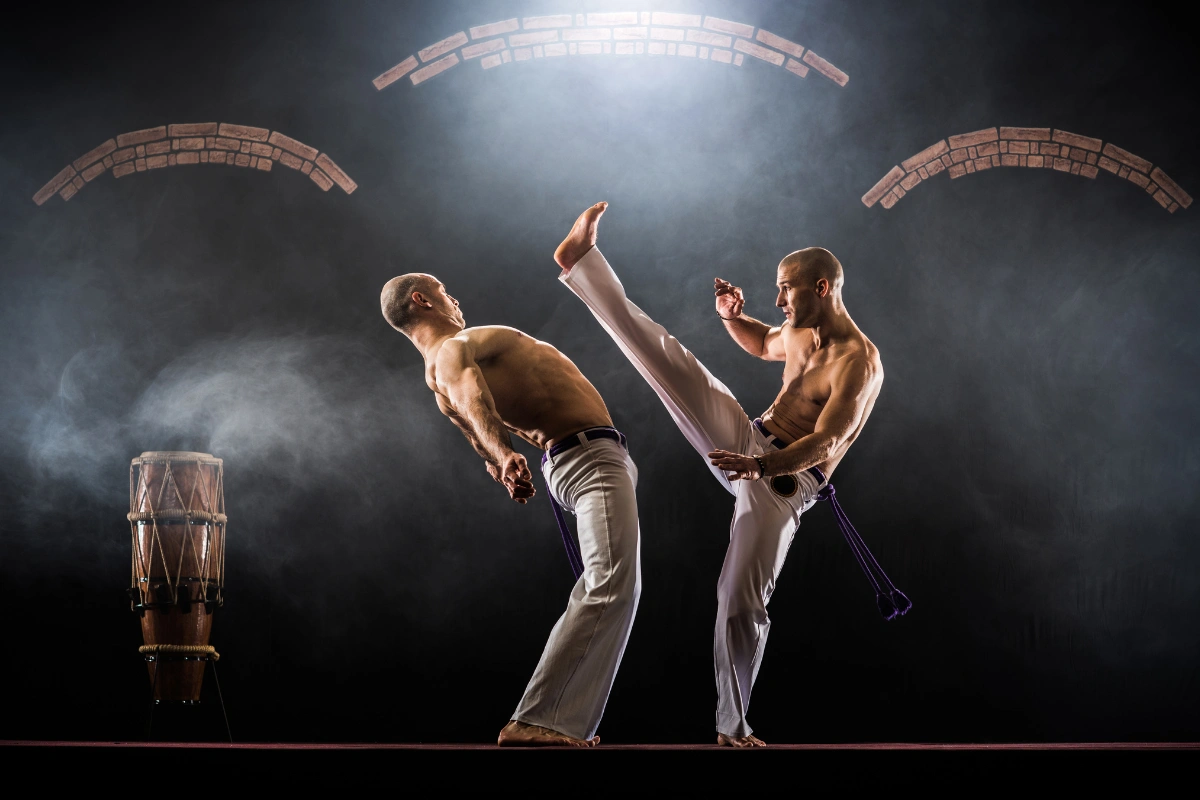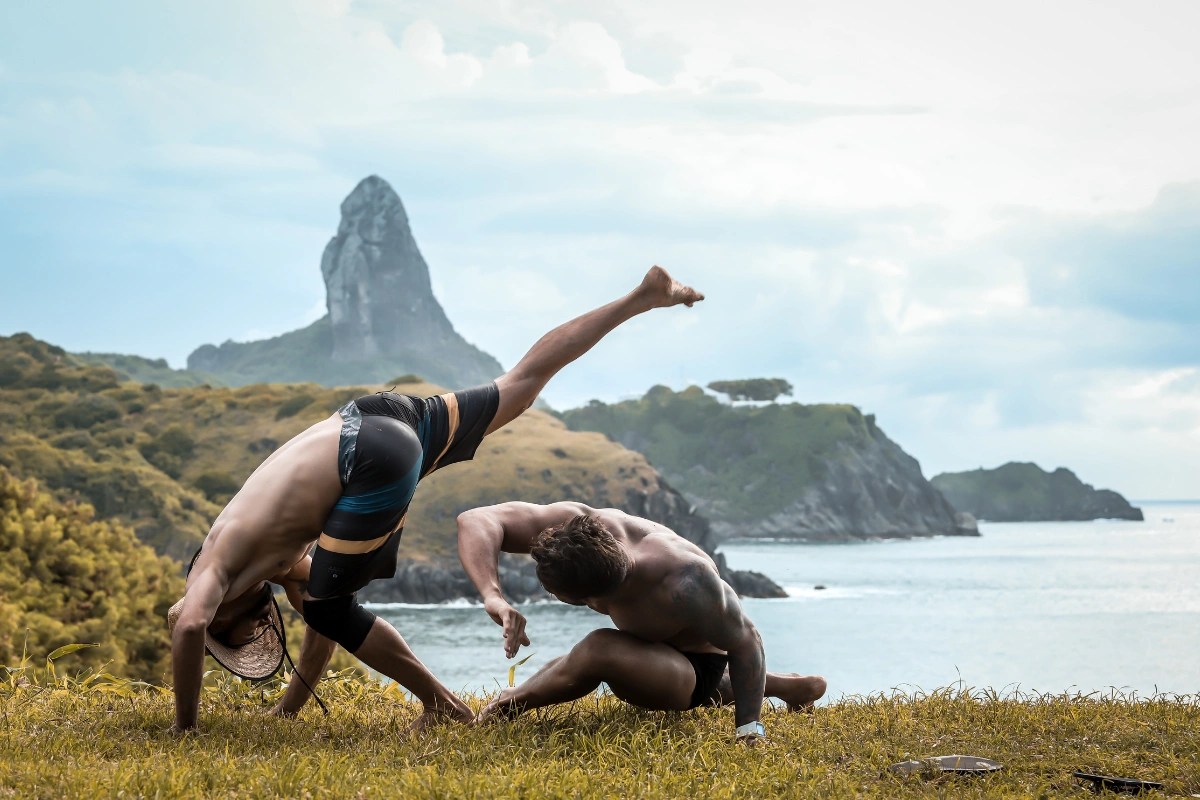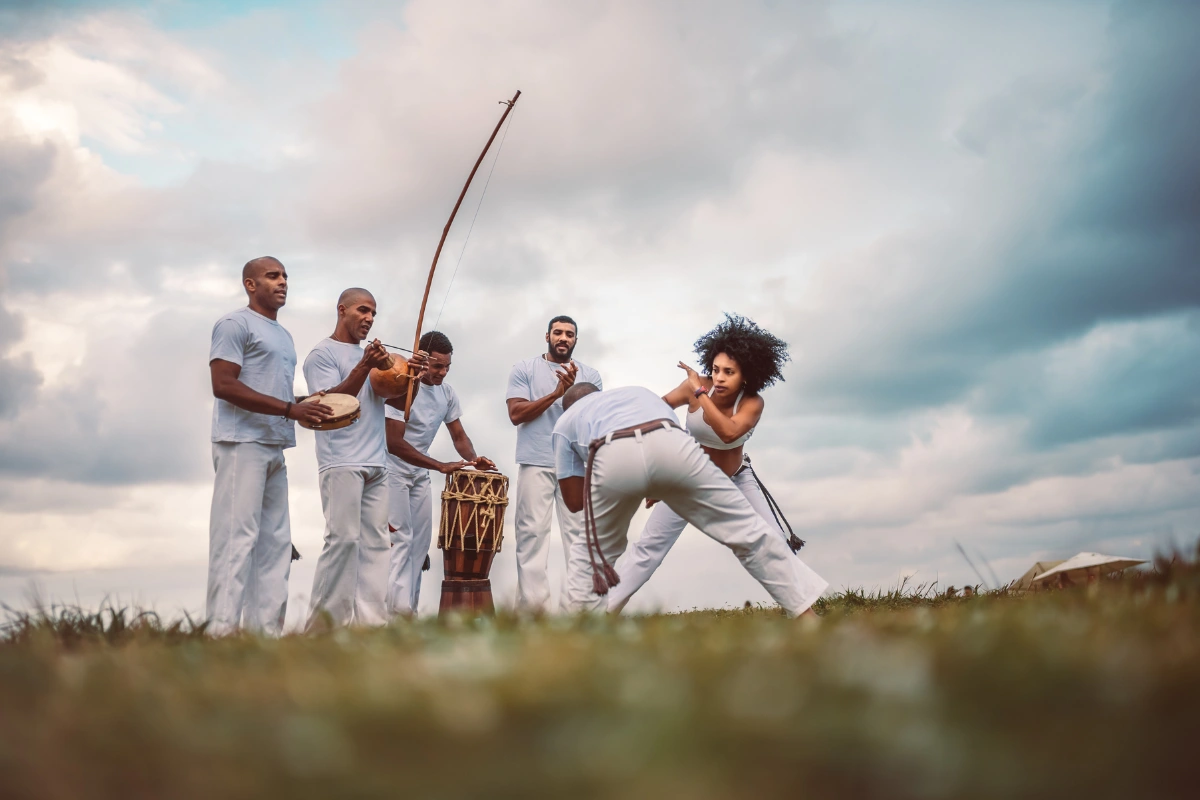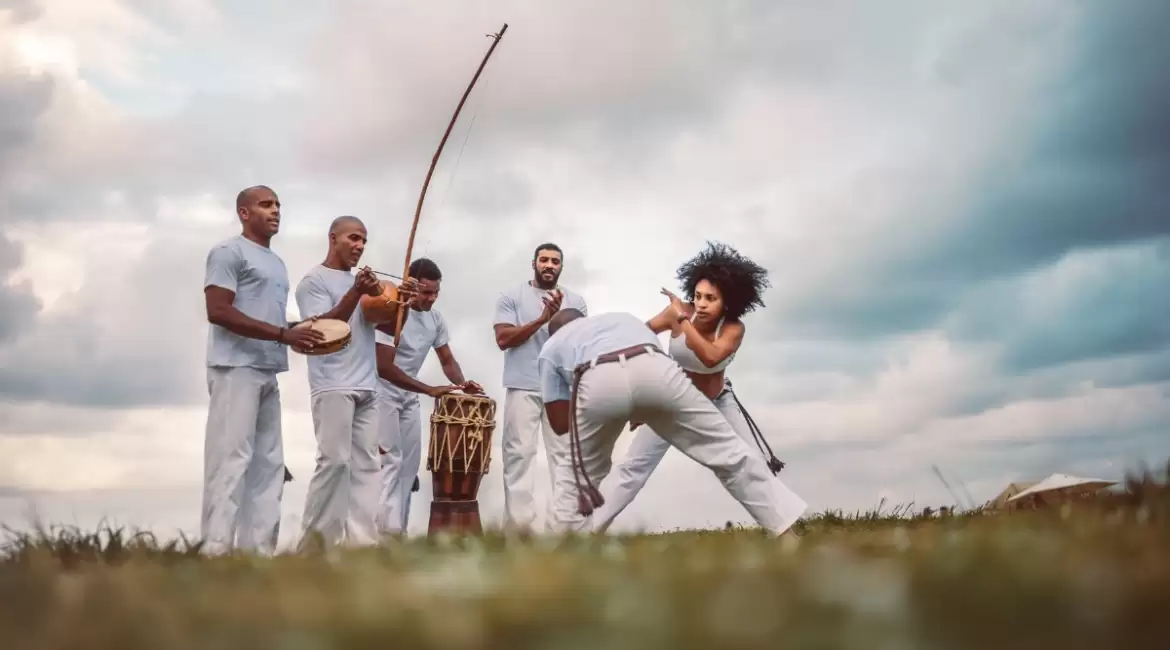Embark on a journey of discovery into the captivating world of Capoeira, a martial art steeped in history, culture, and tradition. Beneath its surface lies a wealth of intriguing details and hidden gems waiting to be uncovered. From its humble origins amidst the tumultuous landscape of Brazilian slavery to its modern-day resurgence as a global phenomenon, Capoeira holds within its embrace a treasure trove of secrets and surprises that may astonish even the most seasoned enthusiasts. Join us as we delve deeper into the intricacies of this dynamic art form, unveiling a tapestry of stories, techniques, and cultural nuances that illuminate the true essence of Capoeira – an experience you may not have encountered before.
What is Capoeira?
Capoeira, an intriguing blend of martial art, dance, and music, is a cultural gem deeply rooted in the vibrant tapestry of Brazilian heritage. Its origins shrouded in historical debate, some assert its African roots, while others contend it blossomed uniquely within the Brazilian landscape. Regardless of its precise genesis, Capoeira has evolved into a captivating fusion of rhythmic movements, deftly interwoven with the pulsating beats of traditional Brazilian instruments and melodies.
At its core, Capoeira is characterized by a dynamic interplay of offensive and defensive maneuvers, seamlessly intertwined with the perpetual motion embodied by its fundamental stance, the ginga. This distinctive martial art transcends mere physical combat; it embodies a rich narrative of resilience, freedom, and cultural expression.
In the fluidity of its movements, Capoeira encompasses a diverse repertoire, encompassing ground positions, graceful kicks, sweeping gestures, and breathtaking acrobatics. Each motion carries with it a story, a testament to the historical journey of its practitioners and the communities they represent.
Distinct regional variations further enrich the tapestry of Capoeira, with styles such as Capoeira Angola and its more contemporary counterpart originating in the 1930s, each imbued with its unique rhythm and flair. While Capoeira Angola exudes a sense of tradition and ritual, characterized by a slower tempo and deliberate movements, the regional style embraces a faster pace, marked by upright, assertive kicks, and a spirited energy.

Brief History
The rich tapestry of Capoeira’s history unfolds over centuries, shaped by the crucible of slavery, cultural amalgamation, and social transformation in Brazil. Emerging from the depths of oppression and adversity, Capoeira is not merely a martial art but a testament to the resilience and ingenuity of its practitioners.
Rooted in the harrowing legacy of slavery, Capoeira traces its origins to the diverse cultures of enslaved Africans forcibly brought to Brazil by Portuguese colonists. Amidst the brutal conditions of servitude, these individuals forged bonds, sharing their ancestral customs, dances, rituals, and combat techniques. From this crucible of cultural exchange emerged Capoeira, a clandestine art form that served as both a means of resistance against oppression and a vehicle for cultural preservation.
Concealing its combative nature behind a veil of music, song, and dance, Capoeira became a clandestine expression of defiance, allowing enslaved individuals to fight for their freedom while evading the vigilant eyes of their oppressors. Yet, even after the abolition of slavery in 1888, Capoeira remained outlawed, its practitioners marginalized and stigmatized by society for over four decades.
It was the pioneering spirit of Mestre Bimba, a legendary figure in the world of Capoeira, that heralded a new chapter in its history. Recognizing the art’s inherent value and cultural significance, Mestre Bimba established the first official Capoeira school in Bahia, Brazil, in 1932. Through his tireless efforts, Capoeira emerged from the shadows, reclaiming its rightful place as a cherished cultural treasure.
At its core, Capoeira transcends the boundaries of mere physical combat, embodying the spiritual and emotional empowerment of its practitioners. A product of cultural fusion, the art reflects the contributions of enslaved Africans, indigenous peoples, and Portuguese immigrants, serving as a poignant reminder of Brazil’s rich tapestry of diversity and resilience.
Today, Capoeira stands as a symbol of empowerment and a catalyst for social and cultural exchange on the global stage. Embraced by communities around the world, it embodies the harmonious convergence of ritual, self-defense, acrobatics, and music, captivating hearts and minds with its blend of grace and strength. As Capoeira continues to evolve and thrive, it remains a living testament to the enduring spirit of its ancestors and the transformative power of human resilience.

How Does Capoeira Dance Work?
Capoeira dance is a mesmerizing fusion of combat and choreography, unfolding within the sacred circle known as the “roda,” where trainers and spectators converge to witness its enchanting spectacle.
What is roda? The Capoeira “roda,” a sacred space where the essence of the art comes alive, serves as a vibrant emblem of community, unity, and shared expression.
As practitioners gather in a circle formation, the roda transcends mere physical boundaries, becoming a dynamic conduit for collective energy and rhythm. The individuals comprising the roda are not mere spectators but active participants, integral to the pulsating heartbeat of the game. Through rhythmic clapping, soul-stirring singing of traditional Capoeira songs, and the enchanting melodies of accompanying instruments, they infuse the space with an electric energy that propels the players within.
Within the sacred confines of the roda, the two players engaged in the game find themselves enveloped by a supportive aura, drawing strength and inspiration from the collective spirit that surrounds them. Here, amidst the swirling movements and mesmerizing rhythms, the roda serves as a metaphor for the interconnectedness of life itself. It symbolizes the notion that each individual, whether player or spectator, contributes to the vibrant tapestry of existence, and that true harmony can only be achieved through collaboration and cooperation.
As two participants step into the center, they embark on a captivating display of agility, grace, and skill. Kicks, jumps, and somersaults seamlessly intertwine, weaving together a tapestry of fluid movement and rhythmic expression that defines the essence of Capoeira.
Unlike conventional martial arts, where victory is measured by defeating one’s opponent, Capoeira transcends the paradigm of winners and losers. Instead, participants engage in a dynamic exchange, fluidly transitioning between offensive and defensive maneuvers, forging a physical dialogue that transcends mere combat.
Upon the conclusion of each dance fight, a brief high-five marks the transition as a new pair takes center stage, perpetuating the rhythmic flow of the roda. Accompanied by the pulsating beat of drums and the evocative melodies of the berimbau, a traditional Brazilian string instrument, the music sets the tempo for the performers, guiding their movements with its hypnotic cadence.
In the heart of the roda, Capoeira dancers become storytellers, their bodies communicating tales of resilience, camaraderie, and cultural heritage. Each movement is imbued with meaning, reflecting the rich tapestry of Afro-Brazilian tradition and the indomitable spirit of its practitioners.
As the rhythm of the music reverberates through the circle, Capoeira dance transcends the confines of time and space, inviting participants and spectators alike to become immersed in its spellbinding embrace. In this sacred arena, the boundaries between past and present dissolve, giving rise to a timeless celebration of movement, music, and the enduring legacy of Capoeira.

Capoeira Today
In the vibrant landscape of modern society, Capoeira transcends its historical roots to become a beacon of empowerment, resilience, and cultural exchange. Embracing the ethos of conflict resolution with confidence, determination, and humor, Capoeira offers practitioners a holistic approach to navigating life’s challenges.
At its essence, Capoeira is not merely a martial art but a celebration of the human spirit in motion. Through its dynamic fusion of movement, music, and physical expression, it fosters a profound sense of joy and camaraderie, transcending barriers of language, nationality, and background.
In the footsteps of its earliest practitioners, today’s students of Capoeira embark on a journey of self-discovery and transformation. They learn to harness the power of struggle, transforming adversity into triumph, and embracing their innate abilities with unwavering belief. Moreover, they discover the profound beauty of communal sharing, recognizing that true fulfillment is found in the connections forged with others on the Capoeira roda.
As Capoeira continues to permeate popular culture and mainstream media, its influence extends far beyond the confines of the dojo or academy. Recognized and revered as a legitimate martial art form on a global scale, it has captivated the hearts and minds of millions worldwide. From bustling metropolises to remote villages, individuals from every corner of the globe are drawn to the rhythm and vitality of Capoeira, finding in its practice a source of inspiration, empowerment, and cultural enrichment.

Summary
In conclusion, delving into the depths of Capoeira reveals a rich tapestry of history, culture, and tradition that transcends mere physical movement. Through our exploration, we’ve uncovered the hidden intricacies and nuances that make it a truly unique and captivating martial art. From its origins as a form of resistance and cultural expression during the era of slavery to its modern-day manifestation as a symbol of empowerment and unity, Capoeira continues to mesmerize and inspire people around the world. As we conclude our journey, let us carry with us a deeper appreciation for the artistry, resilience, and communal spirit that define Capoeira – a testament to the enduring power of human creativity and perseverance.


Leave a reply